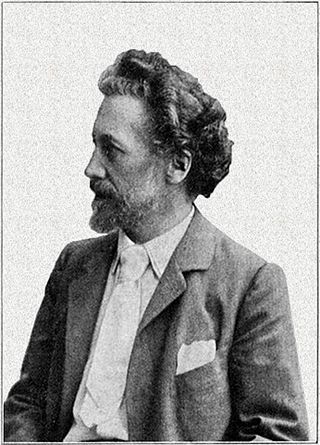Life and works
He came from a poor family, that worked hard to put him through school. From 1833 to 1836, he studied at the k.k. Polytechnisches Institut [ de ] (now part of the Technical University of Vienna) then, from 1836 to 1840, at the Academy of Fine Arts. He was awarded the academy's Gundel-Prize for excellence in 1837. After graduating, a scholarship enabled him to continue his studies in Munich and take several study trips.
From the 1840s, he worked closely with Johann Romano von Ringe [ de ], a childhood friend and fellow student. Their firm became prominent in the field of rental and commercial buildings, but they specialized in upper-class residential architecture. Romano was essentially the company's salesman, so he became familiar throughout Viennese society, whereas Schwendenwein was largely unknown, although the designs were predominantly his. Most of their buildings are in Vienna, but they worked throughout the Austro-Hungarian Empire.
From 1866, he was a member of the academy and, in 1870, was awarded the Order of the Iron Crown, which conferred a title of nobility. In 1876, he joined the Vienna Künstlerhaus.
When his wife died in an accident in 1872, he withdrew from the construction business, but continued to participate on committees, commissions, and other official bodies. He used much of his fortune to support charitable causes.
A street in Vienna's Währing district was named after him in 1894.
Among his most notable works are the Palais Schey von Koromla (1864) on the Ringstrasse, built for the banker, Friedrich Schey von Koromla; the Palais Dumba [ de ] (1866), built for the industrialist, Nikolaus Dumba; and the Palais Henckel von Donnersmarck [ de ] (1871), which is now a Radisson Blu hotel.

Baron Theophil Edvard von Hansen was a Danish architect who later became an Austrian citizen. He became particularly well known for his buildings and structures in Athens and Vienna, and is considered an outstanding representative of Neoclassicism and Historicism.

Palais Schey von Koromla, also known as Palais Schey, is a Ringstraßenpalais building in Vienna, Austria.

Greeks in Austria number between 5,000 and 18,000 people. They are located all around the country, but the main community is located in Vienna.

Gustav Pick was a musician and composer of Wienerlieder. He is best known as the creator of the "Fiakerlied".

Eduard van der Nüll was an Austrian architect, who was one of the great masters in the historicist style of Vienna's Ringstrasse.

Franz Rumpler was an Austrian genre and landscape painter.

Edmund Ritter von Hellmer, born Edmund Hellmer and ennobled in 1912, was an Austrian sculptor who worked in the styles of Historicism and Art Nouveau.

Carl Tietz was a German architect who practiced in Austria.

Nikolaus Dumba was an Austrian industrialist and liberal politician. He is considered to have been an important patron of the arts and music and a benefactor of Greece.

Friedrich Schey Freiherr von Koromla was an Austrian banker. Around 1863, he built Palais Schey von Koromla in Vienna, Austria.

Josef Löwy was an Austrian painter, publisher, industrialist and Imperial and Royal court photographer.

The following outline is provided as an overview of and topical guide to Vienna:

Alois Ludwig Pichl was an Austrian architect. He worked mainly in Northern Italy, Vienna and Hungary for members of the House of Habsburg and other aristocrats. Some sources give his middle name as Luigi.

Heinrich Schwemminger was an Austrian history painter.

Albert Theer was an Austrian portrait painter and lithographer.

August Krumholz was an Austrian architect.

Friedrich Schilcher was an Austrian portrait, genre, and history painter, and decorative designer.

Hermann Burghart was a Bohemian-born Austrian scenic designer and set decorator.

Countess Eleonore Batthyány-Strattmann was a Viennese court lady. The daughter of Imperial Court Chancellor Count Theodor Heinrich von Strattmann und Peuerbach, she was married to Hungarian nobleman and Ban of Croatia Ádám II Batthyány until his early death in 1703. For more than twenty years after becoming a widow she was Prince Eugene of Savoy confidante, companion and some have suggested Éminence grise. One of the most respected women in 18th century Viennese society, she was known as 'Beautiful Lori'.
Lothar Paul Abel was an Austrian architect, and a lecturer at the University of Natural Resources and Life Sciences, Vienna.
This page is based on this
Wikipedia article Text is available under the
CC BY-SA 4.0 license; additional terms may apply.
Images, videos and audio are available under their respective licenses.




















